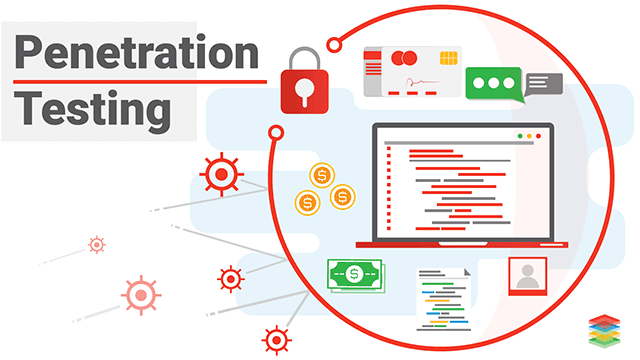Pen testing, popularly known as penetration testing, is a type of ethical hacking that allows companies to simulate a cyberattack on the software infrastructure. The authorized group of personnel will target their attacks on specific areas in the software networks to evaluate how efficient the security of the network will be. With the rapid use of in-network services by millions of consumers in Australia and worldwide, rapid advancements in internet usage have become prone to hundreds of cyber attacks throughout the software grids in Australia. Cyber attacks are so prevalent that the cybersecurity centres in the country receive a cyber report once every ten minutes, according to data taken within a year by September 2020.
Such rise in cyber threats can only indicate breaches in the security firewalls that protect sensitive data and information in the networks. This is where penetration testing shines through. Authorised hackers that work for the company arrange simulated cyber-attacks that can draw out the network security’s flaws and weaknesses in the system. This allows the organisation to review the networks by strengthening the firewalls and make changes accordingly.
How Is The Process Performed?
Certified hackers that are professionally known as ethical hackers use manual tools to break into a network security system. This simulation is done in such a way that the data is protected and the entire procedure is done under the supervision of authorised security personnel. Pentesting can also be done automatically by advanced artificial intelligence software hired by the company for the testing process.
Concentrated attacks help the company review the security systems and constant bombardments of cyber attacks are recorded and noted. The information is then analysed to find out any breaches or weak spots in the system that potential cyber thieves can use to manipulate or steal important data.
Cyberattack simulations can carry on till a weak spot is determined or if the network security gives in and exposes a crack in the software infrastructure. The findings are then reported and the breaches are then analysed and strengthen to prevent future attacks on the system
The testing is done on both internal programmes as well as external files and software available on the internet for the public. Virtually, it’s done anywhere on the company servers that can potentially be used for cyber attacks.
Why Is This Testing Undertaken?
The best way to analyse and review network security is through pen testing procedures. Any weak spots in the system will be identified and brought to light, later programmed and strengthened to stand firm against future cyber attacks. It can also allow the organisation to project any damage costs that can occur in the event a cybercrime does get out of control.
The findings are then studied and any lack of security measures in the system will be identified and replaced with stronger firewalls. Once the whole testing process is done, the security system of the network is restored online with better defensive countermeasures ready to engage any cyber threats in the future.
When Should A Company Implement This Procedure?
- When there are chances for a possible breach.
- When there is a change or update in the network security systems.
- When new infrastructure or new software is being installed in the networks.
Advantages Of Conducting Such A Test:
- For security reasons to strengthen the network countermeasures that can effectively repel a cyber attack.
- To analyse the security networks for possible breaches and weak spots.
- To simulate real-time costs of cyber theft and present any vulnerability risks in the system.
- To improve customer trustworthiness by safeguarding their information and data.













